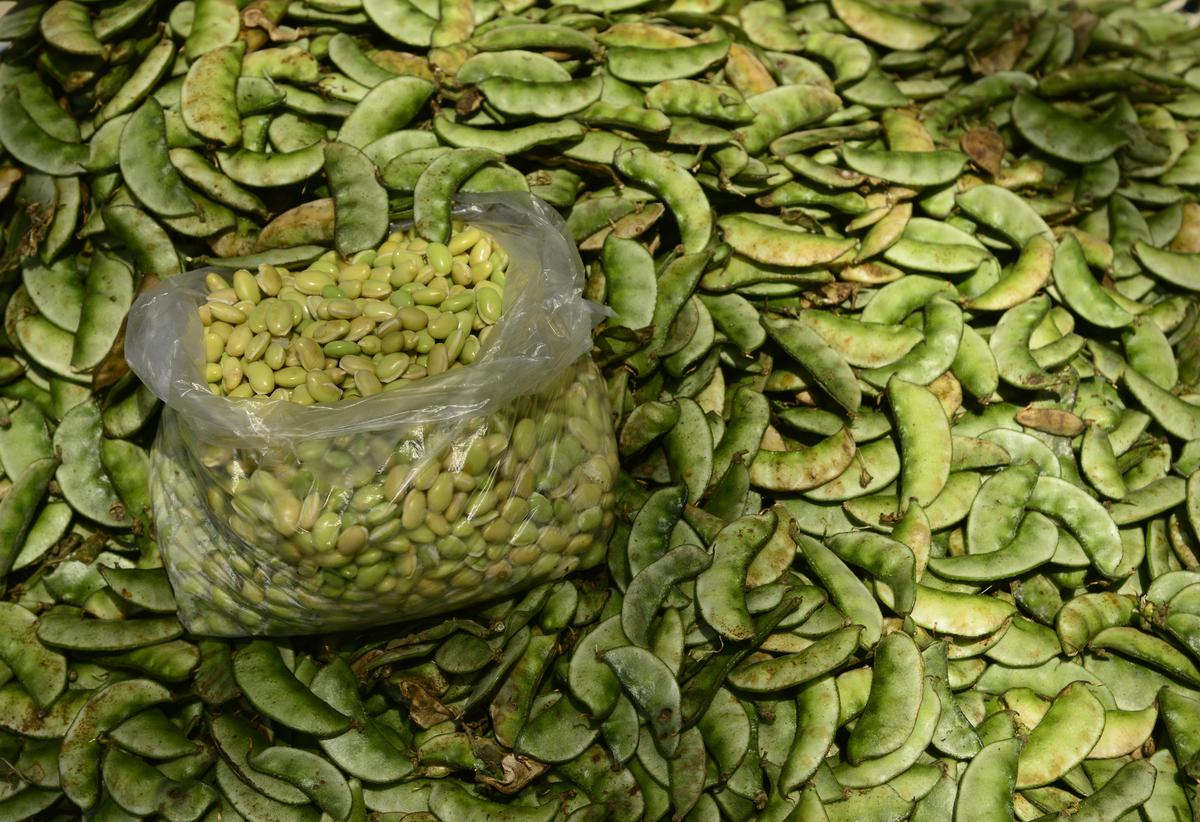
Rain hits avarekai cultivation; price might be higher than usual this time
The Hindu
Farmers say the cultivation of avarekai requires cold, misty weather which cannot be found when there is rain every other week
Everyone’s favourite avarekai might hit the markets later than usual and in lesser quantities this time as the crop has been adversely affected by incessant rain. Those farmers who have been growing avarekai regularly for many years now, after analysing the erratic weather patterns, have given up on cultivating it this time, especially in regionals such as Magadi and Kolar, and this could cause a shortage of the beans in the State.
“The rain destroyed all our plans of avare this time. I had been growing it for years but this time, I decided to not risk it. Only one in a hundred farmers might have sown it this time. Hence the price will mostly be on the higher side”, said Chennathimmaiah, a farmer from Magadi.
Farmers said the cultivation of avarekai requires cold, misty weather which cannot be found when there is rain every other week. “That misty weather is what gives the avare its famed sogadu (a distinct aroma) . These rains are not good for the formation of the beans. The yield will be very less this time overall,” said a farmer from Bengaluru Rural district.
Most farmers grow avarekai as a mixed crop along with ragi. While manual methods were being used before to harvest ragi, these days, farmers are equipped with machines that chop and bundle the harvest up. “If avarekai is grown in the lines between ragi, then the machine cannot effectively do its job,” explained Anjaneya Reddy, a farmer from Kolar.
He said that this was the main reason why many farmers in Kolar gradually stopped cultivating avarekai. “Even though we are famous for our sogadu avarekai, from the last three years, the number of cultivators has come down owing to this reason. Farmers are only growing as much for their domestic use. However, in the border district of Anantapur, a lot of farmers are cultivating naati avarekai and they might dominate the markets in the region,” he added.
A manager at Hopcoms said that if there is sufficient, good yield, then good quality avarekai might be available in the range of ₹40 to ₹50 a kg in Bengaluru. “We should wait for the next fortnight or two and check the quality of the beans which reach the market. If the quality is bad, then the price will shoot up.”
Swathi K.S. the owner of Vasavi condiments, which organises the annual avare mela said that depending on when the produce reaches the market, the mela dates will be decided. “Avarekai has not come to the market yet. It is expected to arrive sometime next month. If that is the case, then the mela might tentatively be organised in the last week of December or the beginning of January.” She said that if there was a shortage of avarekai in the State this time, then they might have to bring it in from the neighbouring States.













